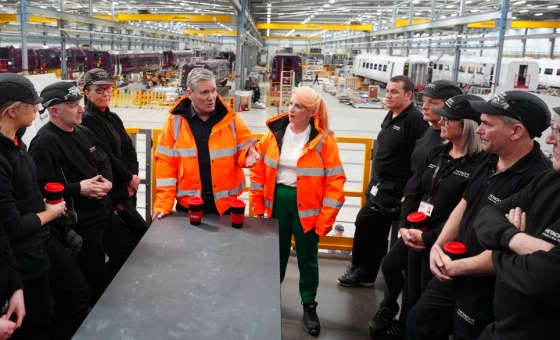This is the last article you can read this month
You can read more article this month
You can read more articles this month
Sorry your limit is up for this month
Reset on:
Please help support the Morning Star by subscribing here
THIRTY years after the heroic miners’ strike there is an enormous contradiction in British energy policy. Despite everything, last year coal remained the main source of power generation producing 41 per cent of all output and 50 million tonnes of imported coal were needed to meet that target.
Yet — and you cannot make this up — last month the government announced it would contribute to the costs of closing two of the very last three deep coalmines in the country. This week’s Turkish mine disaster shows the true cost of imported coal.
I would be happy to give up coal for a green alternative but British coal is being replaced by Russian, Columbian or US coal. It is also not a question of cost — does anyone think nuclear is cheaper?
British energy policy is crazy and so is the structure of the coal industry. It is interesting that the last deep mine in England, Hatfield, and the last deep mine in Wales, Tower, are both employee-owned.
I remember the heated debates we had back in the late 1970s about workers control and the coal industry. The Myth Of Workers’ Control is a seminal pamphlet by Arthur Scargill and Peggy Kahn, published in 1980, in which Scargill makes the case against workers’ control in favour of collective bargaining.
He argues that the relationship between capital and labour is fundamentally one of conflict and that workers’ control under capitalism is a contradiction in terms.
He is not against the increase in the influence of workers on the work process through their unions. The process of class conflict requires unions to exercise both their industrial and political power. So in these circumstances workers’ control is a dangerous myth that diverts and weakens the class struggle. I understand this argument but still I wonder if it is right.
There is a history of bitter struggle between the colliery owners and the miners and back in the day there was deep suspicious of co-operative ownership. When in 1865 Henry Briggs And Son, after a decade of bitter industrial relations, decided to turn their pit into a co-op one worker is reported to have said: “All coal masters is devils and Briggs is the prince of devils, this co-op system was instituted in order to destroy the union.”
The following decade saw numerous examples of co-op coalmines being successful, at least for a while. Mining is always subject to geology and individual pits were vulnerable to the coal owners rigging the market.
In 1873 the Northumberland Miners Association set about forming a Co-operative Mining Society. The prospectus said, “To give the miner the fruit of his skill, economy and care in production is nothing more than the barest justice… To this end the miners of Northumberland and Durham have resolved to have collieries of their own.”
Their aim was not just to own the pit but also the pit villages too. Their first pit was Monkwood near Chesterfield, a bit of a way from Northumberland, which they purchased for £68,000. Sadly, things did not go well. The miners at Monkswood were less than keen on being member-owners of the pit and despite reassurances it only had a couple of years of economic life in it.
Nevertheless co-operative pits sprang up as far apart as Ayrshire and Lancashire. When one pit near Bolton got into financial trouble it ended up being owned by the Bolton Retail Co-operative Society.
The ownership question was central to that incredible outburst of industrial militancy that produced “the miners’ next step” in 1912.
The south Wales miners argued that nationalisation of the mines would not lead to workers control but “simply makes a national trust with all the force of government behind it.”
Industrial democracy was the objective. “Today owners and shareholders rule the coalfields. They own and rule them mainly through paid officials. The men who work in the mine are surely as competent to elect these as shareholders who may never have seen a colliery.”
In the 1984-5 dispute the NUM certainly took on an NCB with “all the force of government behind it.”
That defeat led to the deliberate destruction of the industry. Yet the last deep mine in Wales was the miner owned Tower Colliery which was successfully mined for 13 years.
Today, with deep coal mined out, the site is in the process of regeneration and is still producing benefits for miners and the local community via the Tower Fund.
The very last deep coalmine in Britain is also owned by miners in the form of the Hatfield Colliery Partnership. Saving 400 desperately needed highly skilled jobs in South Yorkshire, the Doncaster pit was bought by an employee benefit trust in December.
The economic history of the industry is full of wasted opportunities. Now the bankers who funded the privatisation and could not get out of coal production and into property development fast enough have left millions of tonnes of accessible coal trapped underground.
Counterfactual history it may be but what would have happened to the British coal industry if it had gone into worker ownership in 1947?
Would we have more than one pit left today?








